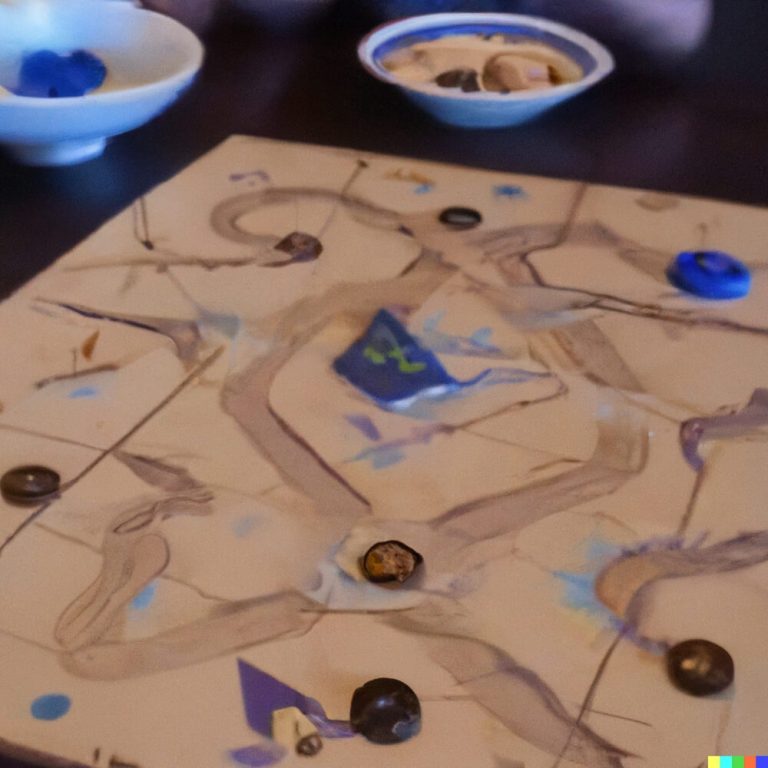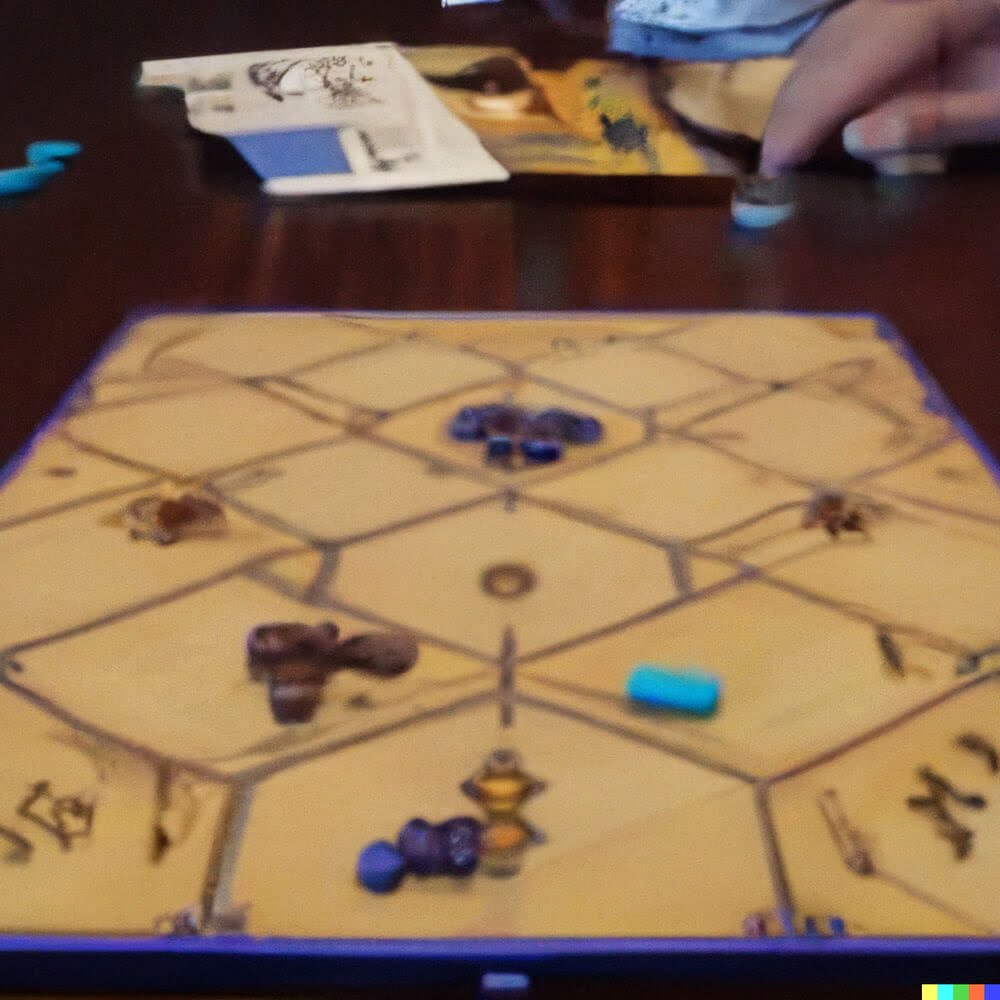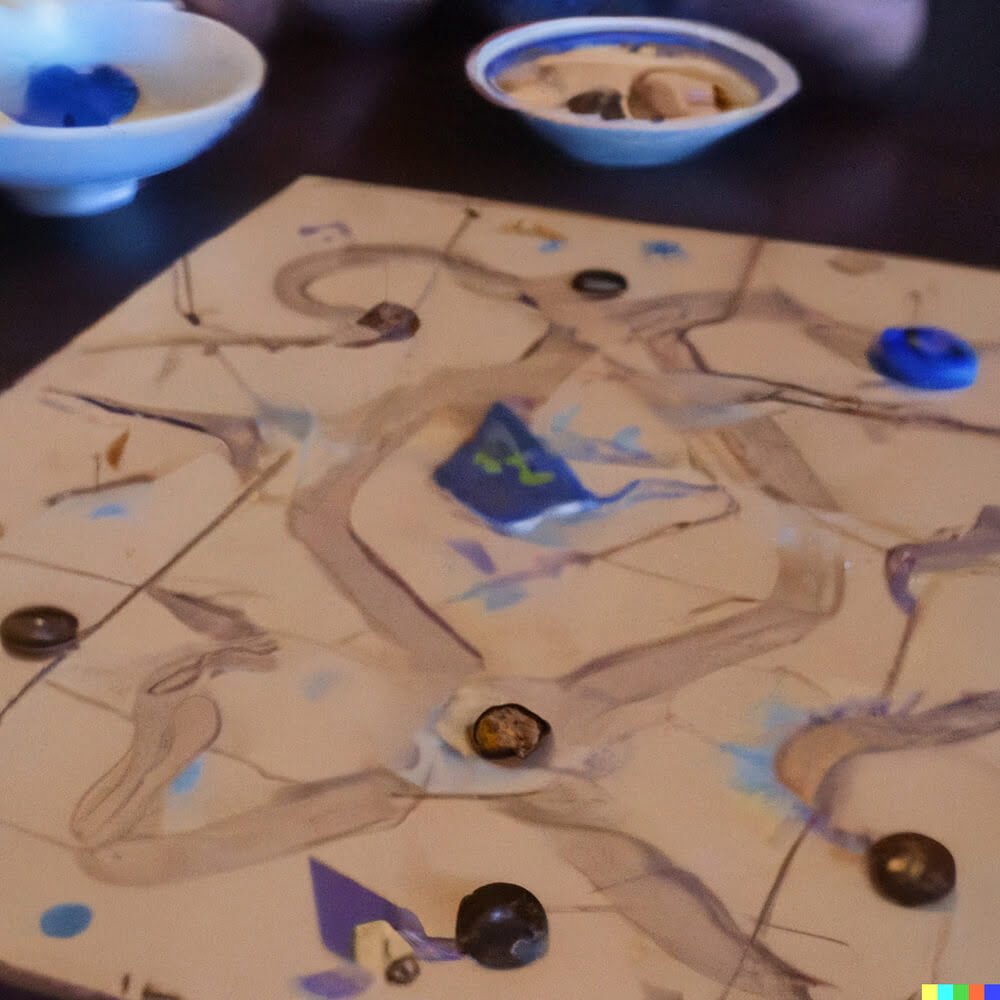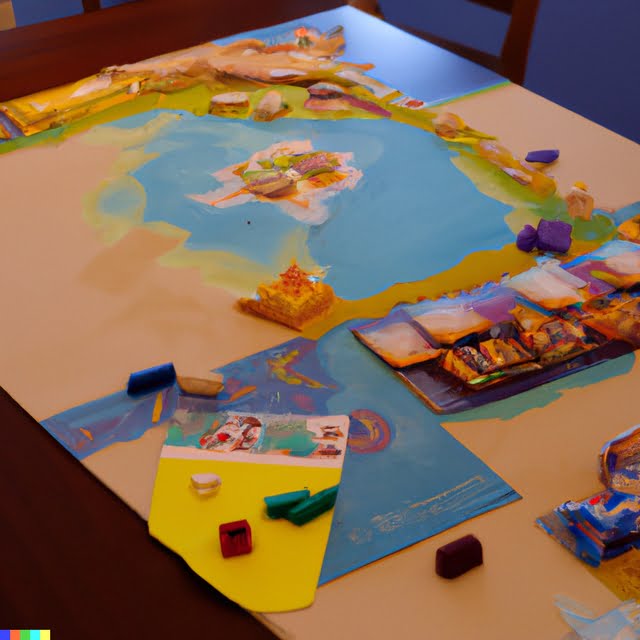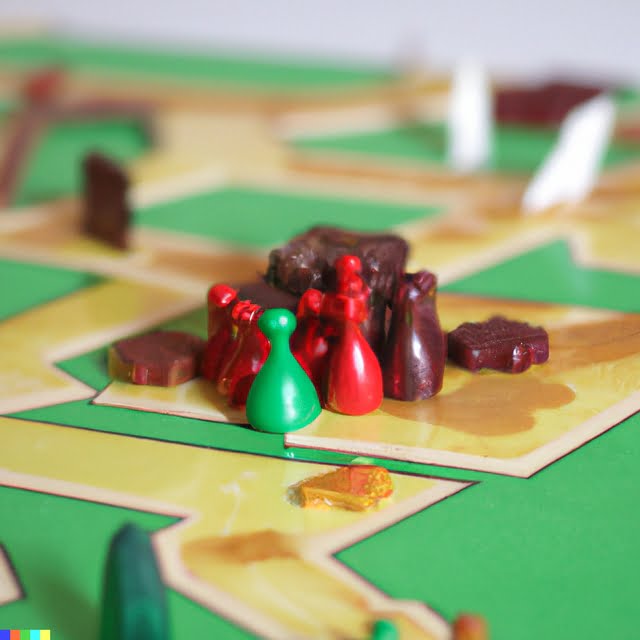Introduction
Introducing the world of board gaming can be an exciting and rewarding experience. It is a stimulating form of entertainment that can provide hours of interactive and educational fun. Board games come in a variety of formats, making them suitable for different types of players, both young and old. From classic card games like UNO to complex strategy games like Monopoly, there are countless options available for individuals looking to start their own board game adventure.
When it comes to inventing and selling a board game, the possibilities are endless. A creative thinker with the right skills can create something entirely unique that could potentially become popular throughout the world. The key elements required to produce a fun and successful board game include careful planning, skill, knowledge and creativity. Potential inventors should use these components when crafting the perfect idea that meets their vision and captivates an audience eager to play.
The first step in inventing a successful board game is researching existing knowledge about playing strategies, game design aesthetics, production materials as well as market trends among potential customers in order to gain a better understanding of what ingredients will make your product stand out from similar offerings already on the market. Once research is complete, planning begins which includes producing prototypes; refining rules; developing gameplay objectives; creating multiple levels; building on player engagement through characters or clues to solve puzzles; choosing appropriate packaging; finalizing required materials and completing other tasks associated with bringing your concept from paper napkin sketch all the way through production for mass distribution. The last part entails sitting down with potential investors in order to discuss pricing structure, royalty rates as well as what type of support they can offer such as marketing resources or advice on distribution channels.
Brainstorming the Basics
Creating a great board game starts with an idea. Think about the type of game you want to design”something that’s fun and engaging for all players. Think about what will make your game stand out from the competition. To help you brainstorm, ask yourself questions like: What’s the setting of the game? Is it playing in space, a fantasy world, or historical times? What are players goals? Is it matching colors and patterns, defeating monsters, or collecting resources? How does it work? Are there levels, character classes, or spatial elements involved?
Once you have a concept figured out, it’s time to move onto creating the look and feel of your board game. Consider the types of pieces needed (cards, dice, tokens) and then design them accordingly. You can be as creative as you want here”from digital imagery to hand-drawn sketches! As long as they remain easy to understand and aesthetically pleasing. Also consider the type of packaging needed to contain the pieces”do you plan on designing a box or bag? Just remember: your goal is to create something that looks appealing enough for people to pick up and want to try out!
Fleshing Out the Gameplay
Creating a board game is much more than inventing a concept. Once you have brainstormed the basic premise of your game, it’s time to get down to the nitty-gritty: creating the actual gameplay. Before you begin designing your game components, you will need to work out how players interact with the rules and mechanics which drive the game.
You can start this process by looking at existing games for inspiration. Existing games can provide valuable insight into how different game pieces, cards, playing boards, and dice are used in combination to create a dynamic and exciting gameplay experience. Make sure that you understand each unique element of the games you’re studying so you can use them as guidelines when fleshing out your own design.
As you study existing games, start jotting down ideas for how to make your game unique and engaging. Consider what type of challenge or skill set players should have in order to succeed at winning the round or complete a task? What special actions must they take to advance? Is there a chance factor where luck has an impact on outcomes? Answering these questions will help form the backbone of your mechanics and ruleset.
Additionally, consider whether any unexpected or non-linear outcomes should shape playability? Keep in mind that your rules should be simple enough that they are quickly comprehended yet complex enough to challenge seasoned players ” no easy feat! With patience and persistence however; eventually all these puzzles pieces will fit together cohesively into one great board game ready for sale.
Building a Prototype
In order to invent and sell a board game, you must first create a prototype. Making the prototype will be time consuming and require significant research. Start by researching the components and components materials needed to create your board game. Your board game may need wood pieces, dice, chips, pieces, cards, or other materials in addition to the actual game boards themselves. You’ll want to make sure that each component is well thought out and has a purpose related to playing the game. A well constructed component should engage players with its aesthetic design as well as its functionality. After you have all of your components ready, construct your game boards. Be sure to use quality materials that are durable enough to withstand play but also aesthetically pleasing. Once everything appears picture perfect, double check them for accuracy as well as potential damage from wear and tear during playtesting sessions. Now your board game is nearly complete”all that’s left is testing out the rules you’ve applied!
Developing a Presence
Developing a presence for your board game is essential in order to attract potential buyers. You need to create a unique brand and artwork that makes your game stand out from other board games on the market. Start by creating a logo or symbol that serves as the signature of your game. Try to make sure it captures the essence of your game’s theme or style, so players immediately think of your game when they see it. Additionally, create custom artwork for the graphics used in the box and the game pieces. This will help add an element of personality that will draw people in, making them more likely to purchase it. Finally, design instruction manuals that deliver clear and concise rules, as well as provide strategies to win the game. Having great artwork combined with easy-to-follow directions makes it much more likely that people will buy your board game.
Playtesting
Creating and successfully launching a board game is no easy task, but it can be a rewarding experience. The first step in creating your own board game is to come up with an idea that both challenges the players and appears fun to play. It’s important to conduct thorough research into the genre of game you want to create and develop an appealing concept.
Once your idea has been refined and you know that your concept works as a game, come up with some potential titles for it. This will help make it easier for people to recognize and remember what your game is about if they hear or see it in stores.
Before you go into the production phase, test out your game idea by holding several playtesting sessions with different groups of people. Invite friends, family members, and strangers, get feedback on rule changes or suggestions going forward ” this helps fine-tune any issues you have identified as well as give players an enjoyable experience when playing. Refine rules continually so that every session becomes smoother and more enjoyable. Each round of playtesting should bring new insights from players which can help refine aspects of the game’s mechanics or visual design features so that all these aspects work together in harmony (and fun!). Not only does this ensure that your game is better enjoyed at the gaming table but also adds value when presenting the product on store shelves or online!
Marketing
The key to selling a board game is to build awareness, engage potential customers, and have an effective sales process in place. You’ll need to market your board game before it’s invented and afterwards. Before the invention stage, you’ll need to target publishers, shops, and players who could be interested in your concept – you can use online media outlets, forums and conventions to spread the word. During this phase, you’ll need to introduce them to your product idea and create hype around its release date.
After the invention of the board game, marketing becomes even more important when it comes to securing successful sales. Depending on your budget and resources available, there are several ways you could go about marketing: advertising campaigns through TV or radio spots if you’re able, digital marketing through social media outlets or using influencers or podcasts, distributing promotional materials such as postcards that include how-to instructions or demo videos of gameplay. Additionally, attending events like conventions or local flea markets can help get people talking about your game and bring in some firsthand experience with consumers so they know what they’re getting before making a purchase decision. Also consider offering discounts and holding competitions that reward people for promoting your product ” this has proven popular in the past and will help build trust among potential buyers!
Growing Success
If you have recently invented and sold a board game, it is time to celebrate your accomplishment! Creating a successful board game involves a series of complex steps, starting with the development of an idea and then carrying it through concept creation, design elements such as artwork and rules, playtesting, manufacturing the components of the game, marketing the game’s launch, and finally its sale. It truly is an amazing achievement to have completed all these steps”especially if your board game has become successful enough to be sold in stores around the world.
To honors this feat you should plan a special celebration to commemorate your success. Invite family and friends who have supported you throughout your journey from concept to product launch. Prepare food and decorate the room in celebration of your accomplishment. Have fun playing some rounds of the board games that inspired yours! You can also showcase your invention for people who may not have seen or purchased it yet by playing some rounds with them too. Finally shower yourself or another influential person involved in the process with words of appreciation for their hard work in making this possible”you’ve done something few people manage to complete so share in it together!
No matter what form it takes (a party at home or out celebrating with colleagues), marking this milestone with others is essential; after putting so much hard work into getting to business success, taking time out to enjoy your success will leave you feeling fulfilled and proud. Use this occasion as an opportunity thank anyone who looked after parts of production process or helped promote the game”without their help, none of this would have been possible. Enjoy the satisfaction of knowing that your ideas came alive through collaboration and dedication for everyone involved in taking part in creating an entertaining board game that people can enjoy around their kitchen tables today.
Closing Thoughts
Inventing and selling a board game can be a great way to make some extra money. With careful planning and market research, you can create your own unique game that is fun for everyone to play. Here are the steps you need to take to bring your board game from idea to store shelf:
1. Brainstorm ideas
2. Conduct market research on similar products
2a. Identify best target audience
3. Develop an engaging storyline or overall theme
4. Create game components such as rules, cards and boards
5. Refine design by testing with people in your target audience
6. Secure a patent, trademark or copyright if necessary (this may require hiring a professional)
7. Choose materials, manufacturers and distributors
8. Market the game using social media channels and other advertising methods
9. Test sales by launching a trial run in local stores, conventions or online outlets
10. Find larger-scale partnerships with large retail chains for expanded distribution
Once you have successfully launched your own board game design, it’s important to stay up with today’s trends so that customers keep buying it! Consider conducting focus groups or surveys to gain greater insight into what players find enjoyable about your product, use social media platforms or emphasize reviews from fans of your game, seek competitive advantages through special offers or exclusive content within the board gaming community. Finally, look for ways to continuously innovate your product experience and create even more value for players beyond the actual physical pieces and rules of the game itself ” perhaps enhance with downloadable digital versions where available across various e-commerce sites like Amazon or Ebay as well as explore ways to work together with websites that showcase and review new games such as BoardGameGeekfor further exposure!

I love playing all kinds of games – from classics like Monopoly to modern favourites like Ticket to Ride.
I created this blog as a way to share my love of board games with others, and provide information on the latest releases and news in the industry.

